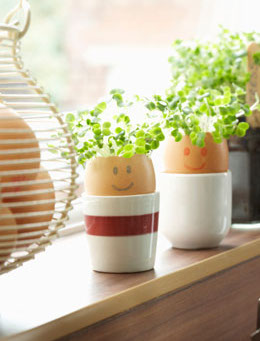While vegetable gardening is usually associated with the outdoors, it does not mean that it cannot be done indoors. In this Buzzle article, we tell you how to grow your favorite vegetables indoors.

Fresh vegetables add flavor and aroma to food that no canned, processed or 'bought from the store' veggies can add! But it's difficult to get fresh vegetables when you want them without any pre-planning. And pre-planning in our busy schedule, especially about food and cooking, is often left last on the 'to plan' list. Then there are those who want to grow vegetables, but have space constraints, bad soil, unpredictable or unsuitable climatic conditions, and/or very little knowledge about the entire process.
Growing Vegetables Indoors
Start by deciding what vegetables you want to grow, and the amount of space you will allocate to your vegetable garden. Try to grow plants that are seasonal and native too. For exotic and rare vegetables, one may need a greenhouse. All plants need sunlight, without which they cannot make their food through the process of photosynthesis. So, your indoor vegetable garden should be located in a south facing window or terrace. Just follow the few gardening tips given below.
While doing indoor gardening, you need to keep your plants light requirement in mind as the season changes from winter to summer. An alternate light source, like diffused lighting, should be kept as a handy option. One can find commercial garden lights for this specific purpose, but a simple fluorescent base with grow bulbs will also work equally well, and they are cost-efficient. Besides light, you will need to ensure that your plants receive a good amount of air circulation. So, while planning the number of containers you will have in your indoor vegetable garden, make sure there is adequate space between them as cluttering them will damage their growth, and inhibit yield production. Hanging pots, containers, and /or raised beds can all be incorporated in an indoor garden.
Select different sized containers and pots. They should be able to support the eventual size of the plant. Clay pots are considered best, as there are reduced chances of water stagnation while using them, but make sure that you have dishes placed under them, else your area will get clay stained. Hanging pots can be your normal plastic containers, as the holes made in them allow for water drainage. Fill three-fourth of the pot with lightweight humus rich soil. You can make a good mix by mixing one part of each; potting soil, peat, vermiculite, and perlite.
Most green salads can be raised directly by sowing seeds. Sow seeds as directed on their package. Keep enough space while planting saplings. Water these plants well, and leave them undistributed. It would be best to invest in a few garden thermometers, as they would help you determine the light and water needs of the plant as they are growing. Try growing compact varieties, as they are best for indoor planting. Watering should be minimal, or as per requirement. Feed the plant with slow releasing organic liquid fertilizer every two weeks. One of the advantages of growing vegetables indoors is the avoidance of pest and insects. A timely check, along with pruning and treatment with insecticidal soap and solutions, if essential, will protect the crop from damage.
Vegetables You Can Grow Indoors
Variety
Vegetables
Greens
Spinach, lettuce, beets, chicory, watercress,
coriander, mint, kale, cos, celery, chard, etc.
Vines and Runners
Sweet green peas, tomatoes, aubergine, peppers,
green beans, asparagus cucumbers, gourds, etc.
Roots and Tubers
Potatoes, carrots, onions, turnips,
garlic, ginger, radish, beet, yams, etc.
Other Vegetables
Okra, cabbages, cauliflower, artichoke, broccoli,
mushroom, sweet corn, pumpkin, etc.
Well, now that you have got the basics, go right ahead and create that indoor vegetable garden that you've been dreaming of!






 Fresh vegetables add flavor and aroma to food that no canned, processed or 'bought from the store' veggies can add! But it's difficult to get fresh vegetables when you want them without any pre-planning. And pre-planning in our busy schedule, especially about food and cooking, is often left last on the 'to plan' list. Then there are those who want to grow vegetables, but have space constraints, bad soil, unpredictable or unsuitable climatic conditions, and/or very little knowledge about the entire process.
Fresh vegetables add flavor and aroma to food that no canned, processed or 'bought from the store' veggies can add! But it's difficult to get fresh vegetables when you want them without any pre-planning. And pre-planning in our busy schedule, especially about food and cooking, is often left last on the 'to plan' list. Then there are those who want to grow vegetables, but have space constraints, bad soil, unpredictable or unsuitable climatic conditions, and/or very little knowledge about the entire process.